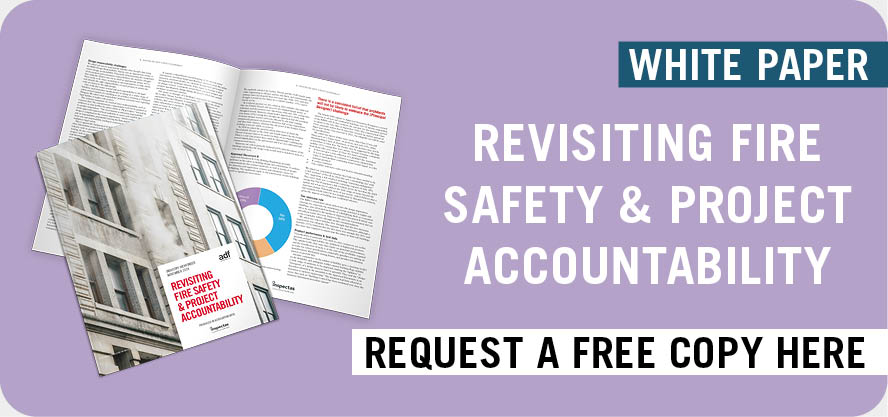With the Building Safety Bill inching its way through Parliament, fire safety is on everyone’s radar. The high-profile Bill has re-affirmed how notoriously complex fire safety compliance is today, and will be, within a new, more stringent legal framework.
Worryingly though, it’s also become apparent that the number of construction product testing facilities is woefully inadequate, with the Bill not fully addressing many of the cost, choice, capacity and redress issues faced by the industry. In fact, the Local Government Association (LGA) is calling for reform of the testing system to be more reliable and comprehensive, plus it wants to see real consequences for the owners and managers of companies that mis-sell products. “The new regulator must have real powers and sanctions and the regulatory system must be properly funded,” says the organisation. “Trading Standards authorities have found themselves caught between costly and complex arguments between test labs about the correct approach to testing, with no way to resolve them.”
At Zeroignition we are desperate to see obvious, accurate, up-to-date labelling by product manufacturers. Without this and clear guidance, we will never see a change and, as an industry, we’ll continue to leave people and properties at risk.
Improving fire protection awareness
Testing and labelling are important issues. Lack of knowledge about product safety standards is another. Those working in architecture, specification and construction require an in-depth understanding of fire safety when specifying and building, and our own research has found this to be lacking. A survey we conducted across the UK, Germany and France in the wake of the Grenfell disaster revealed that knowledge levels surrounding fire and fire protection amongst some of our most trained professionals in architecture, was ominously low.
Of those questioned, just 3% of architects were able to correctly define the four basic fire protection terms: active fire protection, passive fire protection, fire resistance and reaction to fire.
A mere 2% of the architects interviewed said they’d received comprehensive fire protection training. Whilst most agreed that they had had some sort of training less than one in ten (8%) said they’ve never had fire protection training. Our findings highlight the clear need for re-education in order to improve expertise and understanding when it comes to fire basics.
There is an appetite to get up to speed on this vital issue. Since the outbreak of COVID-19, NBS (formerly National Building Specification) says it saw a marked increase in webinar attendance during this time, as more people were working from home and had time to spare without having to spend time out of the office travelling. Eager participants included product manufacturers, as well as architects and specifiers. The online webinars covered a variety of different topics including fire safety.
Delivering industry best practice
I feel strongly that the construction industry needs to learn from other industries, such as automotive manufacturing, and aviation which focuses on a checklist approach to hugely minimise risk to passengers. If people rely on memory, mistakes happen, and the simple action of checking off points can stop fire planning elements being missed.
Thankfully, the digital ‘revolution’ that the construction industry is currently experiencing can create ‘digital footprints’ that prove the right building criteria has been adhered to. This will become essential if we’re to successfully implement watertight fire safety checks before a building is handed over to the occupant or end user.
Manufacturers are also investing heavily in R&D projects, which will help bolster fire safety awareness in construction and provide added protection. After all, it is only when fire protection is treated with the gravity it demands, that we can start looking at new approaches to construction which reinforce a building’s role to keep people safe and secure.
Raising confidence across the board
The industry needs to keep engaging in the positive changes which are starting to emerge. I am certain that with a culture that’s willing to learn and improve, the sector will begin to adapt and innovate further. Ensuring that we can demonstrate safety and wellbeing are being considered at the heart of the building design will help improve end-user confidence no end.
Let’s be clear. Fire retardant products need the same level of scrutiny as the elements that make up cars, trucks and aircraft, and this will require investment in the right testing facilities, digitally-managed labelling, transparency in the supply chain, and colleagues making decisions based on solid training and deep-rooted understanding of compliance. Having confidence in the products we specify, buy and install is more than just about quality – it’s about safeguarding lives.



